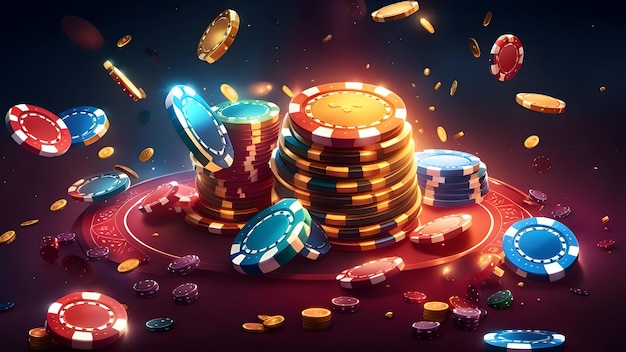
The 51 game is an exciting card game that combines strategy, luck, and social interaction, making it a favorite among players of all ages. Whether you're playing with family at home or competing with friends in a lively gathering, understanding the intricacies of the game can elevate your experience. This comprehensive guide will delve into the rules, strategies, and tips that can help you master the 51 game and impress your opponents.
Understanding the Basics of the 51 Game
What You Need to Play
To play the 51 game, you’ll require a standard deck of cards, typically containing 52 cards (excluding jokers). It’s essential to gather a group of 3 to 6 players to enjoy the game fully. Each player should have a good understanding of card rankings and basic game strategies.
Objective of the Game
The primary goal of the 51 game is to accumulate points by winning rounds and collecting cards that hold higher values. Players aim to be the first to reach a predetermined number of points, usually 51, hence the name of the game.
Card Values
Understanding card values is crucial in the 51 game. Here’s how the cards typically rank:
- Number Cards (2-10): Face value.
- Face Cards (Jack, Queen, King): Worth 10 points each.
- Aces: Can be worth 1 or 11 points, depending on the player's strategy.
Setting Up the Game
- Deal the Cards: Shuffle the deck thoroughly and deal each player a specific number of cards, commonly 7. The remaining cards form a draw pile.
- Establish the Play Area: Designate space for the draw pile and a discard pile. Ensure players can easily reach these piles during their turns.
Game Play Mechanics
How to Play the 51 Game
The gameplay revolves around players taking turns to draw and discard cards. The round proceeds as follows:
- Drawing a Card: On their turn, a player begins by drawing a card from either the draw pile or the discard pile.
- Making Combinations: After drawing, players can form sets or sequences. A set consists of three or more cards of the same rank, while a sequence consists of three or more consecutive cards of the same suit.
- Discarding: At the end of their turn, players must discard one card, ensuring that they always hold the required number of cards.
Ending a Round
A round concludes when a player has successfully laid down all their cards in valid combinations. This player reveals their hand, and other players must then reveal their cards to calculate points. Points are tallied based on the cards remaining in each player’s hand.
For More Info Visit: https://www.51gameapp.in
Scoring in the 51 Game
Calculating Points
Points are calculated based on the cards left in hand after a round concludes:
- Number Cards: Face value.
- Face Cards: 10 points each.
- Aces: 1 or 11 points, depending on the player’s strategy.
The player who successfully ends the round does not score any points for cards laid down but receives points based on the opponents' remaining cards.
Winning the Game
The game continues in rounds until a player reaches the target score, typically 51 points. It’s a game of both skill and strategy, as players must adapt their tactics based on their hand and the actions of their opponents.
Advanced Strategies for Winning the 51 Game
Card Counting Techniques
One of the most effective strategies in the 51 game is card counting. By keeping track of cards that have already been played or discarded, players can make more informed decisions about their draws and discards.
Reading Opponents
Pay attention to your opponents’ actions. Are they discarding cards quickly or holding onto specific cards? Understanding their strategies can give you an edge. If an opponent seems to be hoarding cards of a particular rank, it may indicate they are working towards a set, prompting you to change your strategy.
Bluffing and Misdirection
While bluffing is not a formal part of the 51 game, employing subtle misdirection can disrupt opponents’ strategies. By occasionally discarding cards that you don’t need, you can create uncertainty about your intentions.
Adjusting to Game Dynamics
Be flexible with your strategy. If you find yourself holding onto low-value cards, consider changing your approach. Sometimes, breaking up a potential set can create opportunities to draw higher-value cards from the draw pile.
Tips for Enhancing Your 51 Game Experience
Choose the Right Environment
The atmosphere can greatly impact gameplay. Select a quiet and comfortable environment where players can concentrate. Good lighting and seating arrangements also contribute to a better experience.
Establish House Rules
Before starting a game, it’s beneficial to establish house rules. These rules can clarify gameplay mechanics and scoring systems, ensuring everyone is on the same page and reducing potential disputes.
Practice Regularly
The more you play the 51 game, the more comfortable you’ll become with the strategies and dynamics. Regular practice helps refine your skills, making you a formidable opponent.
Enjoy the Social Aspect
Remember that the 51 game is not only about winning; it’s also about enjoying time with friends and family. Embrace the social interaction and camaraderie that comes with the game.
Conclusion: Becoming a 51 Game Expert
Mastering the 51 game requires a blend of strategic thinking, keen observation, and adaptability. By understanding the rules, employing advanced strategies, and enhancing your gameplay experience, you can improve your chances of success. Gather your friends and family, set up the cards, and enjoy countless rounds of fun as you work towards becoming a 51 game expert!